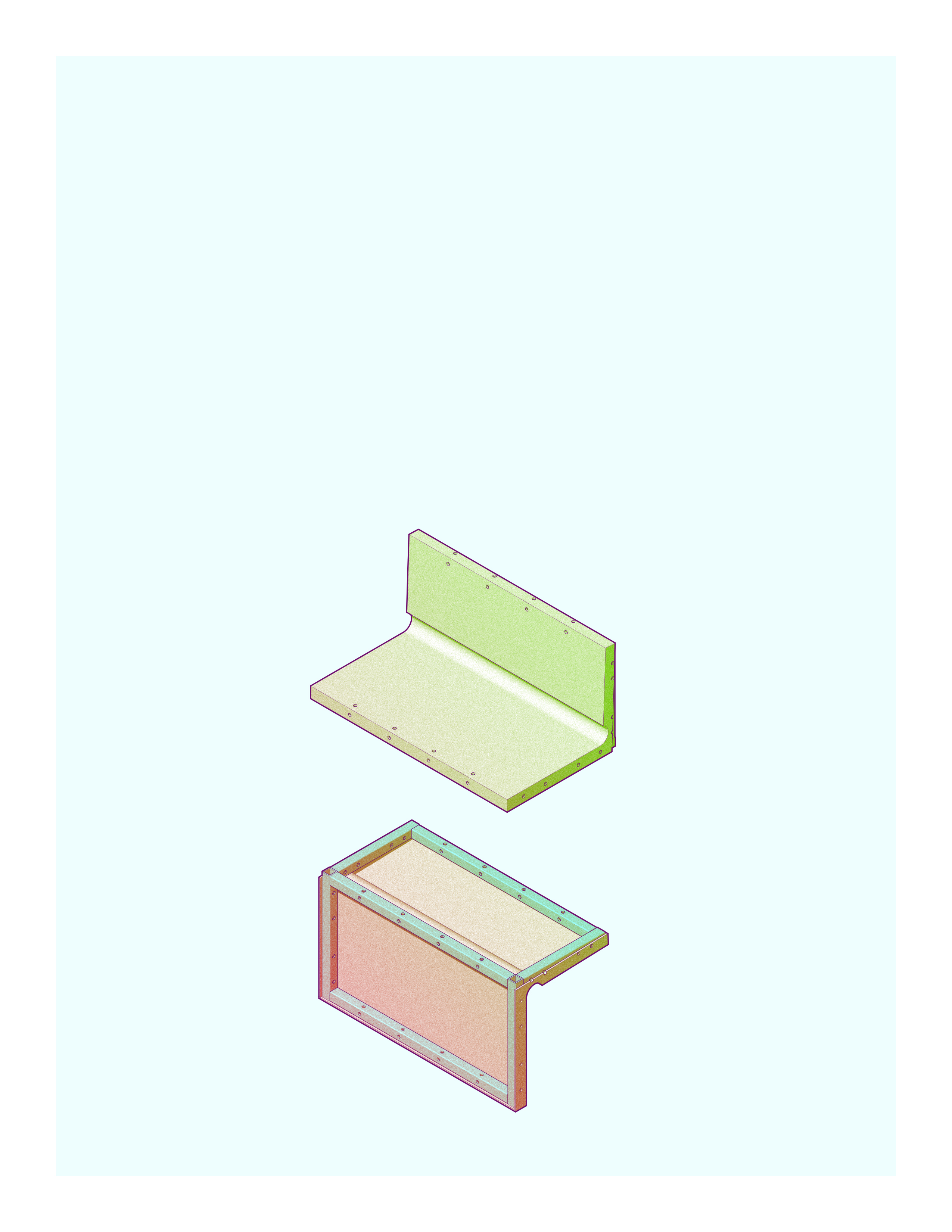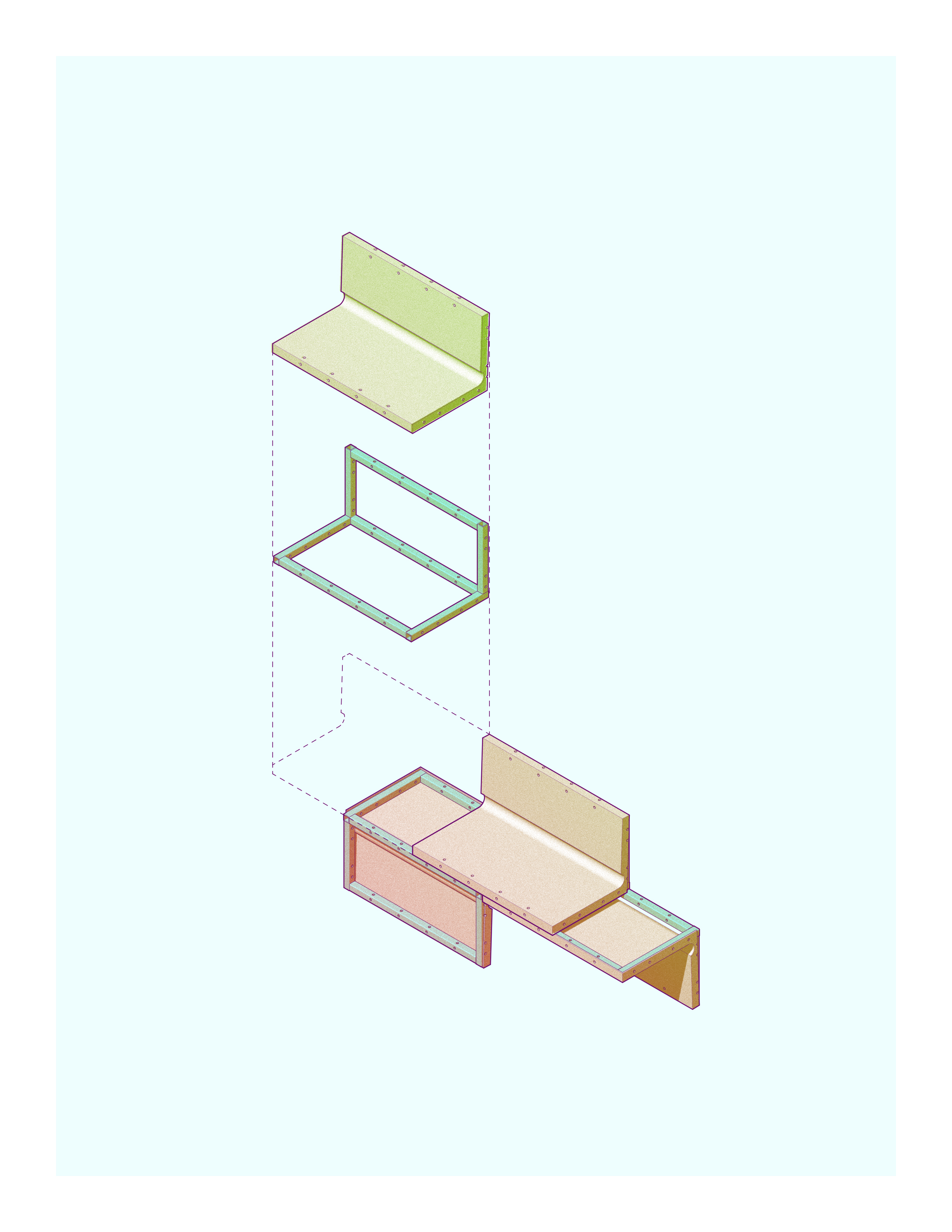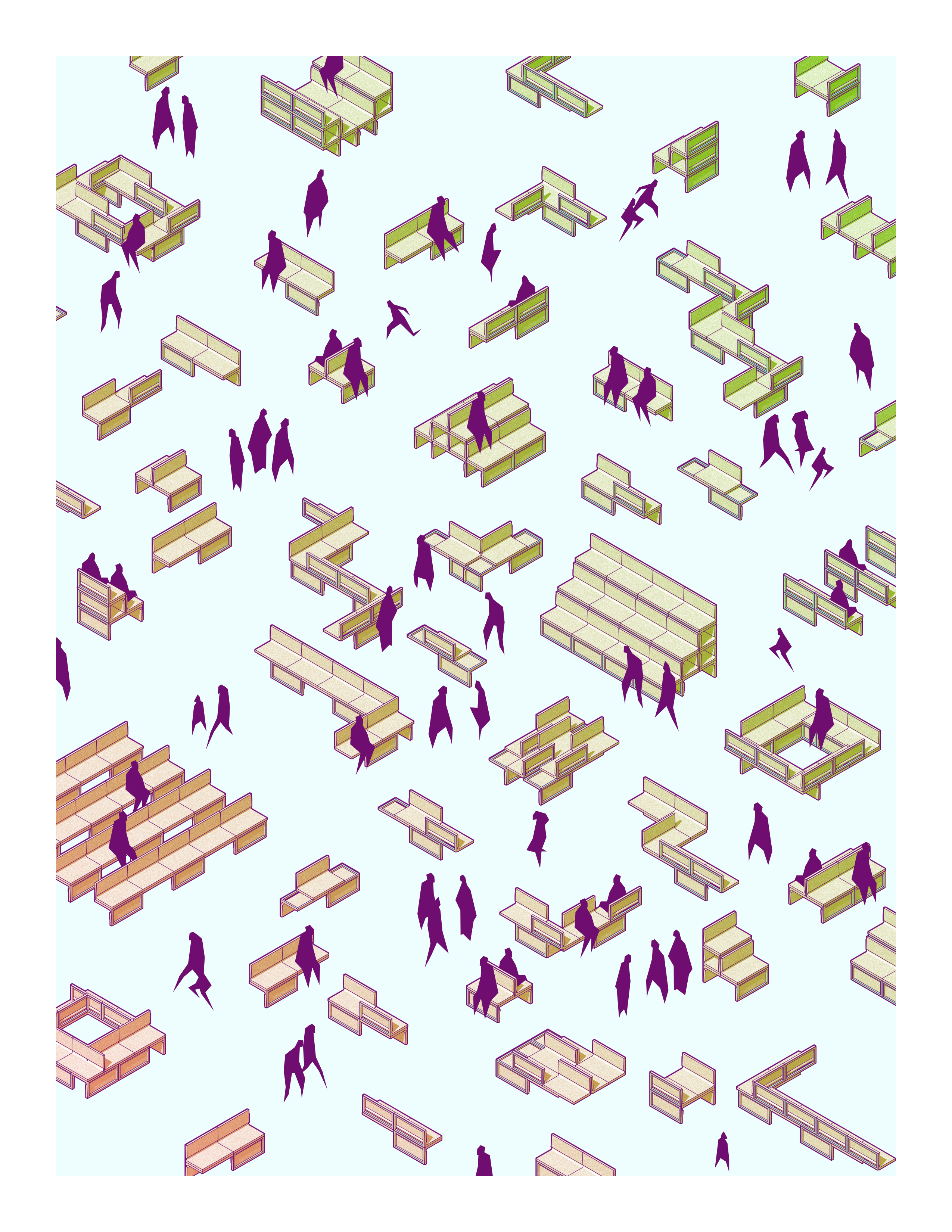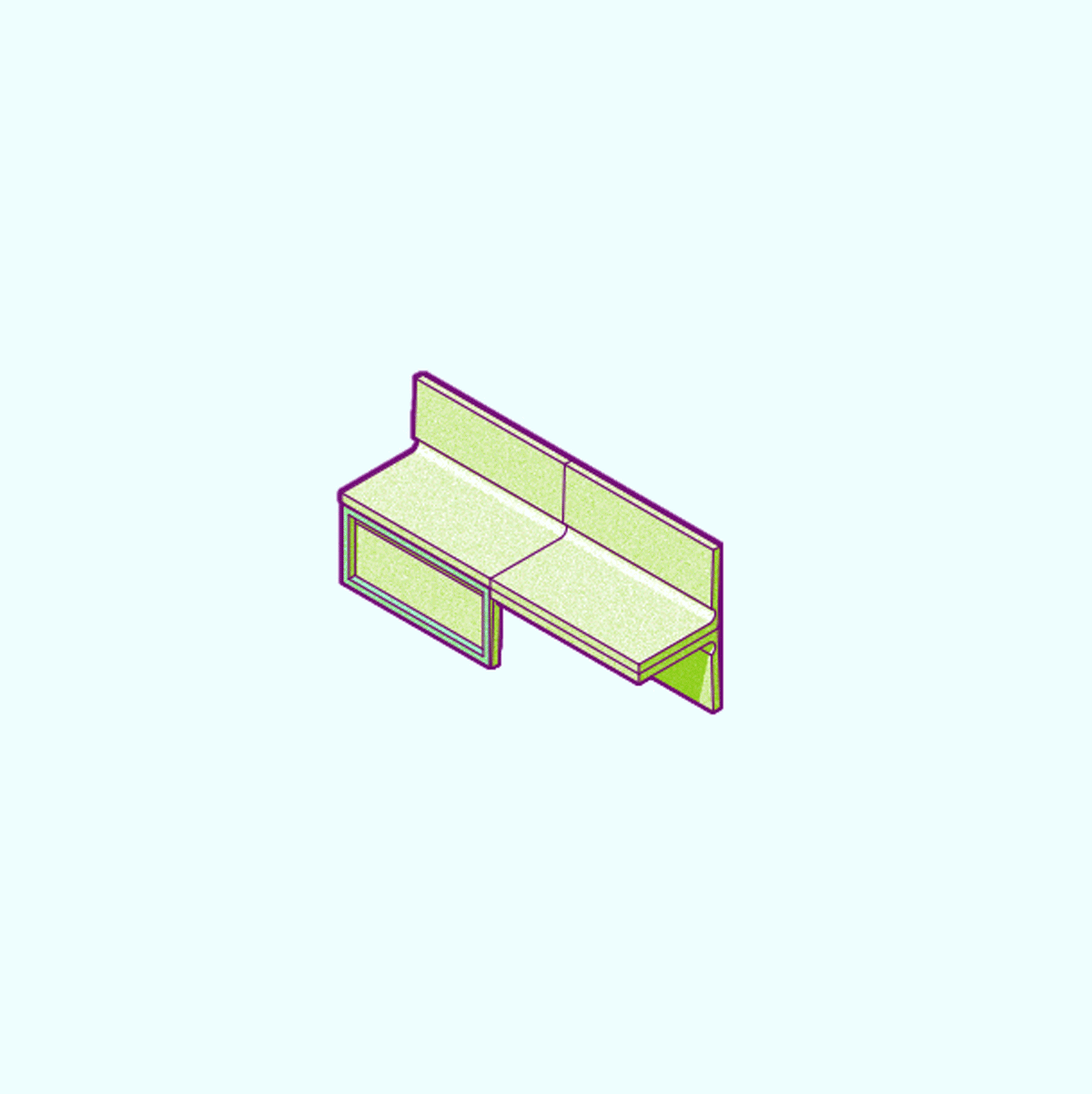By a stroke of strange bureaucratically entangled coincidence, the same year that the 2018 Folly/Function Call for Proposals requests chairs for the installation at Socrates Sculpture Park, the Metropolitan Transportation Authority of New York announces its plan to eliminate or replace chairsfrom its high traffic rail lines. Some of the MTA’s now defunct seats will presumably be resold to other cities; and a few will be sold online by MTA’s very weird and very real memorabilia website to strange transportation history collectors. However, it is our suspicion that, without other options, many of these chairs will be discarded or placed indefinitely in storage.
A Part Apart: An Interdepartmental Love Story proposes the elegantly obvious—rather than put all the excess units to waste, they can be “cross-cycled” from one department to another and be installed for the Socrates Sculpture Park as a material-reducing and cost-effective solution to everyone’sproblem.
As a base parameter, the MTA chair proves a very effective design tool as well—like a giant plastic angle, the unit can be stacked, tumbled, and mirrored in an array of configurations. The seats are supported with a steel armature, which in turn has pre-drilled holes allowing for the seat modules to be bolted together. With a simple, kit-of-parts armature system, A Part Apart can be rearranged according to the Socrates Sculpture Park’s fluid programming needs and social microcosms, from couples’ and singles’ benches to performance bleachers and stages.
Given the Park’s origins as a junkyard, we like to think it’s oddly fitting as a final resting place for the discarded artifacts of New York City’s ever-evolving infrastructure. However, the paradigm of “cross-cycling” proposed in A Part Apart is more of an afterlife than a gravesite. With its capacity for continually evolving organization and the extraordinary (and usuallyproblematic) durability of plastic, the MTA chairs can be used and enjoyed by park visitors for years to come. When it finally does meet its ultimate end, we also propose a final sculptural configuration of A Part Apart. At once a functioning seating system anda decorative object for the park, the final form of A Part Apartbecomes an opportune moment to take a “Duchampian” approach to reimagining an element that in present context is mundane and ubiquitous, but may well one day take its place in nostalgic memorabilia.




